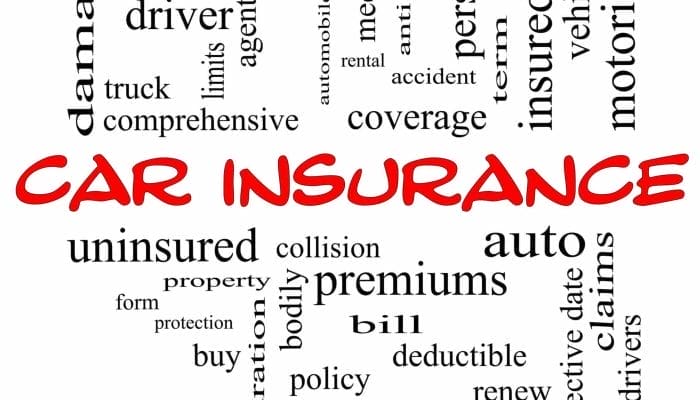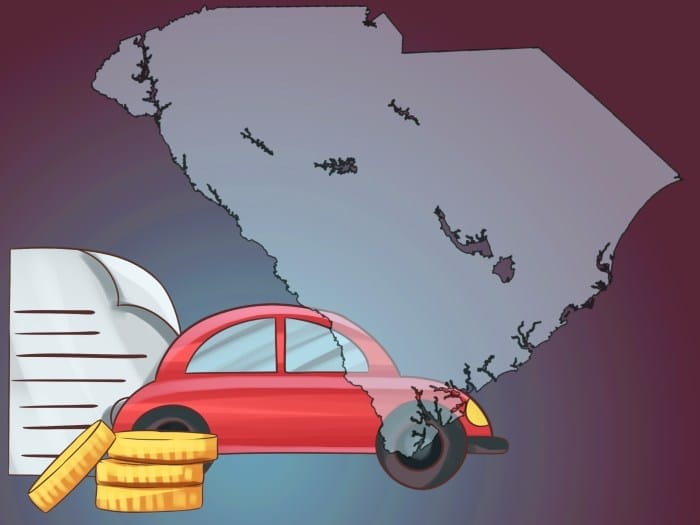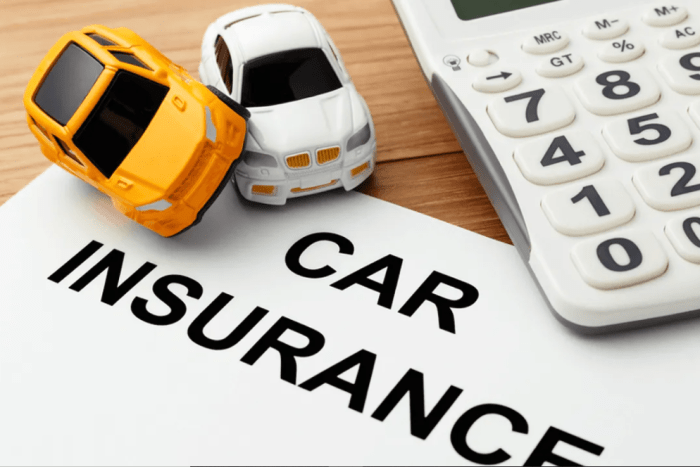In the realm of automotive ownership, young drivers often face a daunting challenge: securing affordable car insurance. With insurance rates seemingly geared towards experienced drivers, it can be an uphill battle for those just starting their driving journey. However, there’s hope.
By understanding the factors that influence insurance premiums, exploring various coverage options, and implementing strategic cost-saving measures, young drivers can navigate the insurance landscape and find policies that fit their budget without compromising coverage.
The path to affordable car insurance for young drivers is paved with a combination of knowledge, proactive planning, and responsible driving habits. This guide delves into the intricacies of young driver insurance, providing a roadmap to help young drivers navigate the complexities of the insurance market and make informed decisions that can lead to significant savings.
Understanding Young Driver Insurance

Young drivers often face higher insurance rates compared to more experienced drivers. This is primarily due to several factors that influence insurance companies’ assessment of risk.
Age is a significant factor, as younger drivers are statistically more likely to be involved in accidents. Gender also plays a role, with male drivers typically paying higher premiums than female drivers. Driving history is another important consideration, as drivers with accidents or traffic violations on their record will typically pay more for insurance.
Age and Insurance Rates
Age is one of the most significant factors that influence insurance rates for young drivers. Younger drivers are statistically more likely to be involved in accidents, and as a result, they pay higher premiums.
- Drivers under the age of 25 typically pay the highest insurance rates.
- Rates gradually decrease as drivers get older and gain more experience.
- By the age of 30, most drivers will see a significant decrease in their insurance rates.
Gender and Insurance Rates
Gender is another factor that can affect insurance rates for young drivers. Male drivers typically pay higher premiums than female drivers.
- This is because male drivers are statistically more likely to be involved in accidents.
- The difference in rates between male and female drivers is typically greatest for young drivers.
- As drivers get older, the difference in rates between male and female drivers decreases.
Driving History and Insurance Rates
Driving history is another important factor that insurance companies consider when setting rates. Drivers with accidents or traffic violations on their record will typically pay more for insurance.
- The number of accidents and violations a driver has will affect the amount they pay for insurance.
- Even a single accident or violation can cause a driver’s insurance rates to increase significantly.
- Drivers with a clean driving record will typically pay the lowest insurance rates.
Shopping for Affordable Coverage

Getting cheap car insurance as a young driver requires careful research and comparison shopping. Comparing quotes from multiple insurance companies is essential to find the best rates. This can be done online through comparison tools or by working with an insurance agent.
Compare Quotes Online
Online comparison tools allow you to enter your information and receive quotes from multiple insurance companies simultaneously. This is a convenient way to compare rates and coverage options. Look for tools that allow you to customize your search based on your specific needs and budget.
Work with an Insurance Agent
An insurance agent can help you find the best rates by shopping around on your behalf. They can also provide personalized advice based on your individual circumstances. However, working with an agent may come with additional fees, so consider the cost-benefit ratio before making a decision.
Choosing the Right Coverage

Understanding the types of car insurance coverage available and selecting the appropriate levels is crucial for young drivers. Striking a balance between affordability and adequate protection requires careful consideration.
Types of Car Insurance Coverage
There are several types of car insurance coverage, each providing protection in different scenarios:
- Liability Coverage: Covers damages and injuries caused to others in an accident you are responsible for.
- Collision Coverage: Covers damages to your car resulting from a collision with another vehicle or object.
- Comprehensive Coverage: Protects your car against damages caused by non-collision events, such as theft, vandalism, or natural disasters.
- Personal Injury Protection (PIP): Covers medical expenses for you and your passengers, regardless of who is at fault in an accident.
- Uninsured/Underinsured Motorist Coverage: Protects you if you are involved in an accident with a driver who does not have insurance or does not have sufficient coverage.
Selecting the Appropriate Coverage Levels
Choosing the right coverage levels depends on your individual needs and budget:
- Liability Coverage: Consider higher liability limits if you have significant assets to protect.
- Collision and Comprehensive Coverage: If your car is new or expensive, these coverages may be worth considering.
- Personal Injury Protection (PIP): PIP coverage can provide valuable protection for medical expenses, especially if you do not have health insurance.
- Uninsured/Underinsured Motorist Coverage: This coverage can be essential, given the prevalence of uninsured drivers.
Consulting with an insurance agent can help you tailor your coverage to your specific situation and ensure you have the protection you need at a price you can afford.
Utilizing Discounts and Savings
Young drivers can explore various discounts and savings opportunities to make car insurance more affordable.
Bundling Policies
Combining multiple insurance policies with the same provider, such as car and home insurance, can often lead to significant discounts. This strategy is known as bundling and is offered by many insurance companies as an incentive to customers who consolidate their policies.
Maintaining a Good Driving Record
Maintaining a clean driving record by avoiding traffic violations, accidents, and DUIs can significantly lower insurance premiums. Insurance companies view drivers with a history of safe driving as less risky, making them eligible for lower rates.
Taking Defensive Driving Courses
Completing a defensive driving course can demonstrate your commitment to safe driving and may lead to a discount on your insurance premium. These courses teach valuable skills and techniques that can help you avoid accidents and improve your overall driving abilities.
Building a Positive Driving History
Maintaining a clean driving record is paramount for young drivers seeking affordable car insurance. A clean record indicates responsible driving behavior, making you a lower risk to insure. Conversely, traffic violations and accidents can significantly increase your insurance rates.
Consequences of Traffic Violations and Accidents
Traffic violations, such as speeding tickets or running red lights, can lead to higher insurance premiums. The severity of the violation and the number of violations on your record will determine the extent of the increase. Accidents, especially those resulting in property damage or injuries, can have a more substantial impact on your insurance rates.
In some cases, you may even be required to obtain high-risk insurance, which is typically more expensive.
Considering Usage-Based Insurance

Usage-based insurance (UBI) programs provide an alternative approach to car insurance for young drivers, offering the potential for lower premiums based on actual driving behavior. These programs use technology, such as telematics devices or smartphone apps, to monitor various aspects of driving, including mileage, time of day, and driving habits.
UBI Program Structure and Benefits
UBI programs typically involve installing a telematics device in the vehicle or using a smartphone app to collect data about driving behavior. The data is then transmitted to the insurance company, which uses it to calculate the premium. In general, safer driving habits, such as avoiding harsh braking, speeding, and driving during high-risk times, can lead to lower premiums.Some
UBI programs offer additional benefits to young drivers, such as:
- Real-time feedback: Drivers can receive real-time feedback on their driving habits, which can help them identify areas for improvement and become safer drivers.
- Discounts and rewards: Some programs offer discounts or rewards for good driving behavior, such as gift cards or cash back.
- Usage-based billing: UBI programs may offer usage-based billing, which charges drivers based on the number of miles they drive, rather than a flat rate.
Exploring Non-Owner Car Insurance
Non-owner car insurance, also known as liability-only insurance, is a type of auto insurance designed for individuals who drive borrowed or rented vehicles but do not own a car.
This type of coverage can be particularly beneficial for young drivers who may not have access to a vehicle or who are unable to afford the cost of traditional auto insurance.
Advantages of Non-Owner Car Insurance
- Lower Premiums: Non-owner insurance is generally more affordable than traditional auto insurance, as it only covers liability and not physical damage to the vehicle.
- Flexibility: This type of insurance provides coverage for any vehicle you may drive, whether it is a friend’s car, a rental car, or a company vehicle.
- Peace of Mind: Non-owner insurance can provide peace of mind for young drivers who may not have the financial resources to cover the costs of an accident.
Disadvantages of Non-Owner Car Insurance
- Limited Coverage: Non-owner insurance only covers liability, which means it does not provide coverage for damage to your own vehicle or personal belongings.
- Rental Car Restrictions: Some non-owner insurance policies may have restrictions on the types of rental cars that are covered.
- Potential Gaps in Coverage: If you frequently drive different vehicles, there may be gaps in your coverage if the non-owner insurance policy does not cover all of the vehicles you may drive.
Managing Credit Score Impact

The connection between credit score and car insurance rates is a topic that young drivers should be aware of. A credit score is a numerical representation of a person’s creditworthiness, and it plays a role in determining the insurance premium they will pay.
Generally, individuals with higher credit scores are considered lower risk by insurance companies, leading to potentially lower premiums. This is because a good credit score indicates responsible financial behavior, which is often associated with safer driving habits.
Improving Credit Scores
To potentially lower insurance premiums, young drivers can take steps to improve their credit scores:
- Pay bills on time: Payment history is a significant factor in calculating credit scores. Consistently making timely payments on all debts, including credit cards and loans, can positively impact a credit score.
- Keep credit utilization low: Credit utilization is the amount of credit used compared to the total credit available. Keeping this ratio low, typically below 30%, demonstrates responsible credit management and can help improve a credit score.
- Reduce debt: Reducing outstanding debt, especially high-interest debt, can positively affect a credit score. Paying down balances on credit cards and loans can improve credit utilization and overall credit health.
- Avoid opening multiple credit accounts in a short period: Applying for multiple credit cards or loans within a short timeframe can result in multiple credit inquiries, which can temporarily lower a credit score. It’s advisable to space out credit applications to minimize the impact on the credit score.
- Dispute any errors on credit reports: Occasionally, credit reports may contain inaccurate information that can negatively affect a credit score. It’s essential to review credit reports regularly and dispute any errors found to ensure accurate credit information.
Understanding State-Specific Regulations

Navigating car insurance for young drivers can be complex due to varying state-specific regulations. It’s crucial to understand these variations to make informed decisions about coverage and rates.
Insurance laws and requirements differ across states, impacting the cost of car insurance for young drivers.
Variations in Insurance Laws
- Minimum Coverage Requirements: Each state sets minimum liability coverage limits that drivers must carry. These limits vary, affecting the cost of insurance.
- Financial Responsibility Laws: Some states have financial responsibility laws requiring drivers to prove their ability to pay for damages caused in an accident. This can be done through insurance, a surety bond, or a cash deposit.
- Surcharge and Penalty Systems: States may impose surcharges or penalties on drivers with traffic violations or accidents, leading to higher insurance rates.
Examples of State-Specific Regulations
- California: California has some of the strictest insurance regulations, requiring drivers to carry minimum liability coverage of $15,000 per person and $30,000 per accident for bodily injury, and $5,000 for property damage.
- Texas: Texas has relatively low minimum coverage requirements, with liability limits of $30,000 per person and $60,000 per accident for bodily injury, and $25,000 for property damage.
- New York: New York requires drivers to carry minimum liability coverage of $25,000 per person and $50,000 per accident for bodily injury, and $10,000 for property damage.
Long-Term Planning

Navigating the complexities of car insurance as a young driver can be daunting. However, by adopting a proactive approach and implementing long-term strategies, young drivers can gradually reduce their insurance rates and secure more affordable coverage over time.
Building a positive driving history is paramount. Young drivers should strive to maintain a clean driving record, free from accidents, moving violations, and traffic tickets. Additionally, maintaining a good credit score can also have a positive impact on insurance premiums, as insurers often view individuals with higher credit scores as lower-risk drivers.
Creating a Timeline
To ensure steady progress toward lower insurance rates, young drivers should create a timeline for themselves, outlining specific goals and milestones to achieve over time. This timeline can serve as a roadmap, guiding them in their efforts to reduce their insurance costs.
- Short-Term (1-2 Years): Focus on building a clean driving record and maintaining a good credit score. Consider taking defensive driving courses or enrolling in telematics programs that monitor driving behavior, as these can potentially lead to discounts on insurance premiums.
- Mid-Term (3-5 Years): Continue to maintain a clean driving record and good credit score. Explore additional ways to save on insurance, such as bundling policies, increasing deductibles, and opting for usage-based insurance if available.
- Long-Term (5+ Years): By this stage, young drivers should have established a solid driving history and a good credit score. They can now consider shopping around for more competitive insurance rates, potentially saving even more money on their premiums.
By following a well-defined timeline and implementing these strategies consistently, young drivers can gradually reduce their insurance rates and secure more affordable coverage in the long run.
Closure

In conclusion, obtaining affordable car insurance as a young driver requires a holistic approach that encompasses understanding insurance rates, exploring coverage options, utilizing discounts, maintaining a clean driving record, and considering alternative insurance options. By following the strategies Artikeld in this guide, young drivers can navigate the insurance landscape and secure policies that provide adequate coverage without breaking the bank.
Remember, the journey to affordable car insurance is a marathon, not a sprint. Consistent effort, responsible driving, and a commitment to financial responsibility will ultimately lead to lower premiums and peace of mind behind the wheel.
Questions and Answers
Q: Why are insurance rates higher for young drivers?
A: Young drivers are statistically more likely to be involved in accidents due to factors such as inexperience, risk-taking behavior, and shorter driving history.
Q: What factors influence insurance rates for young drivers?
A: Age, gender, driving history, location, and the type of vehicle driven are among the key factors that insurance companies consider when determining rates for young drivers.
Q: How can young drivers find the best rates on car insurance?
A: Comparing quotes from multiple insurance companies, taking advantage of discounts, maintaining a good driving record, and considering usage-based insurance programs are effective strategies for finding affordable car insurance as a young driver.
Q: What types of discounts are available to young drivers?
A: Common discounts for young drivers include good student discounts, multi-car discounts, bundling policies, and discounts for completing defensive driving courses.
Q: What is usage-based insurance, and how can it benefit young drivers?
A: Usage-based insurance programs track driving behavior and offer lower rates to drivers who demonstrate safe driving habits. These programs can be particularly beneficial for young drivers who may have higher initial insurance rates.



